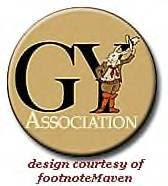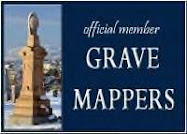Masks have been worn by man for ritual and ceremonial purposes since ancient times and can be traced to the Egyptian and Roman periods.The Death Mask in most ancient cultures was made of wax or plaster cast of the persons face. Sometimes while alive, but usually after death had occurred. For the wealthy or the royal families, they were often cast in bronze or gold and placed over the deceased face at burial. The process served as a reminder of the deceased for the family as well as being a protection from evil spirits and was associated with the belief in the return of the spirit.
In North American History, every Native Tribe known to have ever existed, has used masks in some ritual or ceremonial purpose. African, Oceanic and Native American tribes considered masks, to be an important part of social and religious life. Some masks were placed over the head and face , while others were simply painted on the face and other adornments and decorations to the head or hair where added.
Some of the more well known masks were made by the Iroquois, especially those belonging to the very secretive and elusive False Face Society. .They were made of wood and corn husks. It has been said that in order to join the False Face Society one must have envisioned a healing mask in a dream and then made or created it as he saw it. Once this was accomplished they were then permitted to participate in the Societies ceremonies.
 The Alaskan Yup'ik tribes are said to have made the most decorative and brightly colored varieties. They were made from a number of materials,
The Alaskan Yup'ik tribes are said to have made the most decorative and brightly colored varieties. They were made from a number of materials, usually whatever resources were available in a specific tribal area. Wood, leather, hides, bones, shells or whatever materials might be available.
Masks were usually created with great personal associations for the wearer or the occasion being celebrated.
Stains and dyes from plants, animals, soil and other materials were used to paint the masks, some of them being quite strange combinations such as blood, coal and urine mixed together.
The Anchorage Museum has a collection of over two-hundred Yup'ik masks that were created during the early 19th and 20th centuries.
The arrival of missionaries to the Yup'ik and other Native tribes began to change the making and use of masks among the Native Americans. The missionaries denounced their masked dances as heathen rituals and their use was practically eliminated by the 1920's.
In 1977 the New York Times reported that there were approximately 2000 surviving masks remaining from this period.
The Cherokee created what is known as the Booger Mask. Made from gourds, and painted with walnut shell or charcoal dye. They were worn for storytelling and worn during the Booger Dance which was a depiction of the arrival of the Europeans to their native land..
The Booger Mask art fell into severe decline when the Cherokee were forcibly removed from their homeland to Oklahoma, where their traditional materials were not available. Read about the Booger Dance Here :
 Some North West Coastal tribes had impressively carved cedar masks which could open at a pivotal point in a story to reveal a second mask carved within the first one.The Hopi and Pueblo tribes carved and painted wooden Kachina Masks. Kachina are the symbols of spirits who control crops, weather, health and all other aspects of life. Kachina are also symbols of ancestors who are highly regarded by the Hopi. There are more than five-hundred indivdual Kachina known. Kachina are more commonly know in the form of Kachina dolls. Each doll has it's own special markings, color, and decoration and are used mostly during the winter and summer solstice ceremonies. They are usually carved from Cottonwood trees and range from an inch to a foot in length. Kokopelli is the most popular and well recognized of the Kachina. Kokopelli is a hump backed flute player who is believed to bring good luck, health and happiness to the homes he adorns and is also known as the teacher of Kachina carving.
Some North West Coastal tribes had impressively carved cedar masks which could open at a pivotal point in a story to reveal a second mask carved within the first one.The Hopi and Pueblo tribes carved and painted wooden Kachina Masks. Kachina are the symbols of spirits who control crops, weather, health and all other aspects of life. Kachina are also symbols of ancestors who are highly regarded by the Hopi. There are more than five-hundred indivdual Kachina known. Kachina are more commonly know in the form of Kachina dolls. Each doll has it's own special markings, color, and decoration and are used mostly during the winter and summer solstice ceremonies. They are usually carved from Cottonwood trees and range from an inch to a foot in length. Kokopelli is the most popular and well recognized of the Kachina. Kokopelli is a hump backed flute player who is believed to bring good luck, health and happiness to the homes he adorns and is also known as the teacher of Kachina carving.Many tribes used masks in healing rituals. It was believed that masks held spiritual powers that never left them. Because many tribes believed that shamanic powers were genetic, healing masks were often passed down thru the bloodlines of Medicine men and Shaman.
Shaman should not be confused with Medicine men or Medicine women. Medicine people are those who serve as prophets, soothsayers and moral leaders. They are often the tribal storytellers and their services were considered healing. The French called them me'decins or doctors. From this the word medicine became applicable to everything pertaining to these people as well as to anything the Natives held sacred.
Shaman are reportedly capable of bringing cosmic powers into ritual to affect healing. A Shaman must develop and maintain his or her relationship with the spirit world and be always prepared to help others. They are said to receive revelations from the spirits. Shaman are personalities who live in deepened relationships with their cosmology and they assist others to deepen their spiritual relationships with the cosmos around them. They revere and appreciate the Earth and the world around them and they hold the Earth as sacred to their survival.
Medicine hats, though not full face masks were also worn by many shaman and healers throughout the tribes. They were usually adorned with a cross and crescent, representing the four directions and the moon spirits and were painted black, blue, yellow and white which depicted the Four Winds or the East, West, South and North. They were often decorated with such things as, Eagle feathers, turquois gems, beads, shells, deer fur and thong and yellow pollen.
The Hopi tribes and others wore masks while curing and praying over the sick, to alleviate suffering and pain, and to perform exorcisms. Some tribes believed that sickness was caused by malevolent or evil spirits. The Nepcetat mask was worn by the Shaman to predict death. It was literally stuck to the face of the Shaman, if it stayed on during the prayer ritual it meant that the person being prayed for would recover and live. If it fell off during the prayer ritual it meant the person was near death.
Shaman initiates often wore masks during their vision quests, believing that the masks would identify them with the spirits and activate their power. Death masks were believed to facilitate communication between the living and the dead in funerary rites. Some Death masks took the form of animal or bird spirits, allowing the wearer to assume the role of the invoked spirits or to fend off evil. Many Native American tribes believed that birds were a link or messenger between the natural and the supernatural world. It is not unusual to find bird feathers surrounding the masks.
Death masks were also believed to help the deceased soul to pass more easily into the next life. The respect and sacredness of the funeral rites of mask dancing was also believed to protect from reprisals from the dead and prevent the risk of wandering spirits. In some tribes the Death Mask was used in initiatory or homage ceremonies, which recounted the creation story and the appearance of death among human beings.
There were also masks created to resemble the images of bears, wolves, buffalo and otters, and were used to appease the animal spirits. They were often worn in dance ceremonies conducted before the hunt, to ensure that the hunt would be fruitful. This is also seen in African tribal customs where symbols of power animals were depicted, such as, elephants, rams, crocodiles and antelope.
North West Coast Native American Bear Mask carved by the renowed carver Elton La Fountaine from the Cree Tribe
Tsitsistas/So'taeo'o (Cheyenne) quilled horse mask, mid-1800s, Montana. Made from porcupine quills, hawk feathers, brass buttons, seed beads, wool cloth, hide, sinew and cotton thread.
Photo courtesy of the Smithsonian's National Museum of the American
The Black Fish mask was worn before hunting and fishing expeditions and was believed to protect and empower the hunter.
The Swan Spirit mask was worn during spring ceremonies to entice the swans, ducks, geese and other birds to come back from the South and provide nourishment to the Natives. Most of these type masks were buried with their owners or burned when no longer useful.
In traditional American culture, masks are often worn during festive celebrations, occasions or as simple decorations, wall hangings and museum displays. But, Native American masks are not taken lightly by the Native people. Their use is reserved only for sacred ceremonies and rituals. Only a select few are honored with permissions to wear them. Native American masks are as varied as the tribes themselves, their ceremonies and their beliefs. The creatures that they depict are highly personalized and the materials used to make them are unique to the individual tribes and their geographical locations.
Sources:
Books:
Secrets Of The Sacred White Buffalo by Gary Null PhD 1998 by Prentiss Hall
Walking The Twighlight Path by Michelle Belanger www.llewellyn.com
Adair's History of the American Indian by Samuel Cole Williams 1775 (first published in 1930 by the National Society of Colonial Dames of America in Tennessee.)
American Indian Healing Arts Kavasch, E. Barrie, Baar, Karen 1999 USA: Bantam
Online links
http://www.deathreference.com/Da-Em/Death-Mask.html
http://www.experiencefestival.com/native_american_death_ceremony
http://www.native-languages.org/masks.htm
http://www.missionindianfederation.com/native-american-masks.html
http://www.suite101.com/content/native-american-after-life-rituals-a76036#ixzz12mvDvF00
http://www.yale.edu/ynhti/curriculum/units/1998/3/98.03.06.x.html
http://www.britannica.com/EBchecked/topic/367906/mask/9060/Funerary-and-commemorative-uses
http://www.cherokeeheritagemuseum-gallery.org/Friends.html
http://www.taosblue.com/1southwestart/masks/hopi/hopimaskgallery.html
http://www.nps.gov/history/history/online_books/kcc/chap5.htm
http://www.masksoftheworld.com/NoAmerica/Native%20American%20Shaman%20Mask.htm
http://preview.equisearch.com/equiwire_news/horse_nation_exhibition_100609

















No comments:
Post a Comment